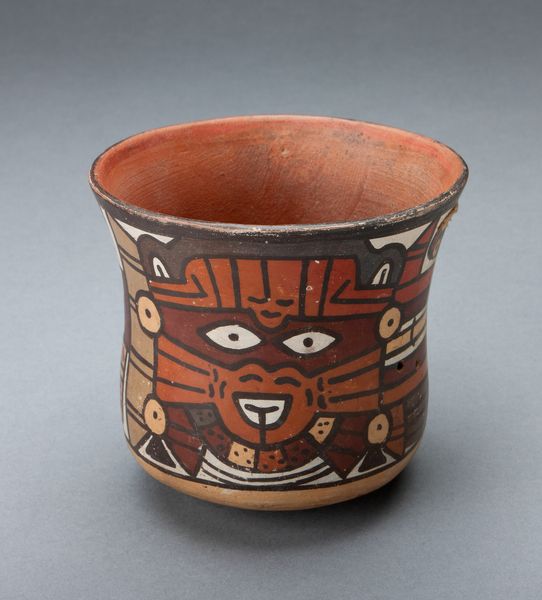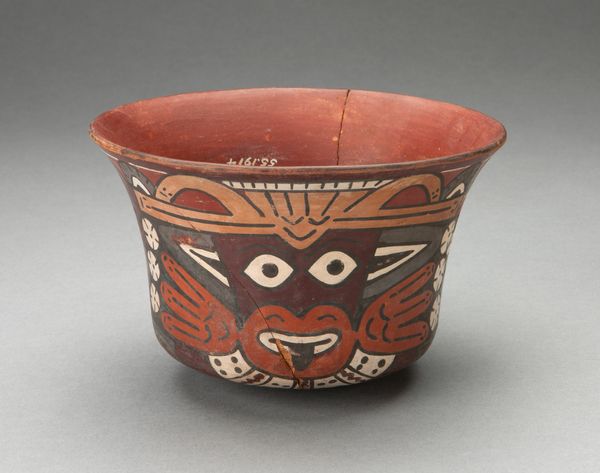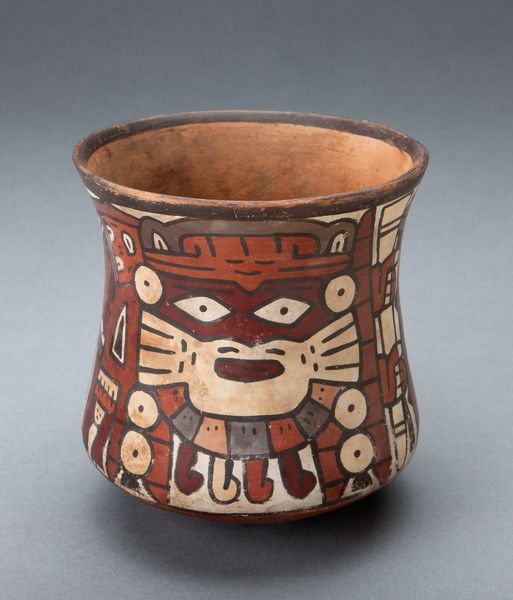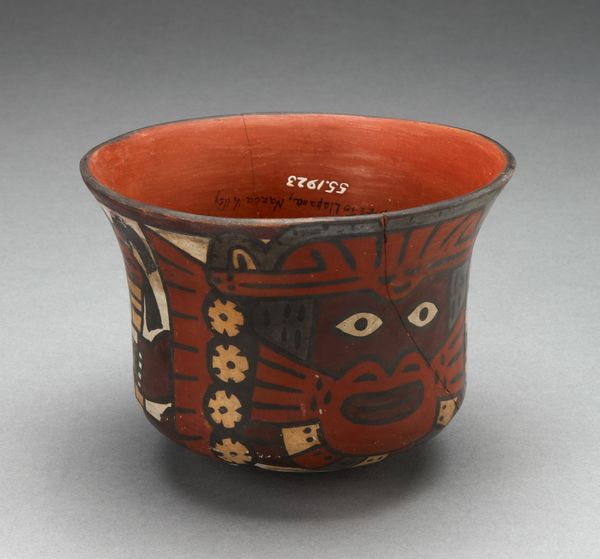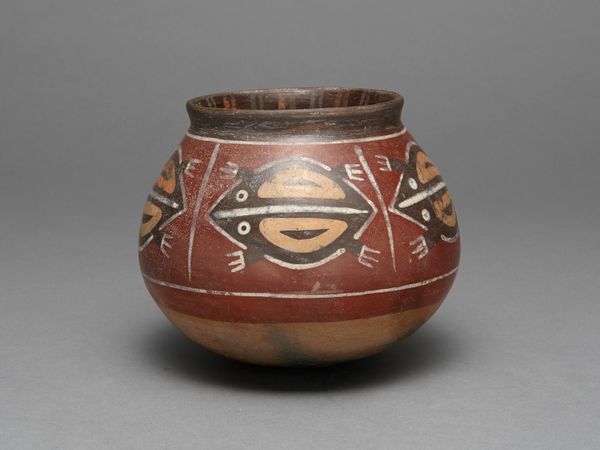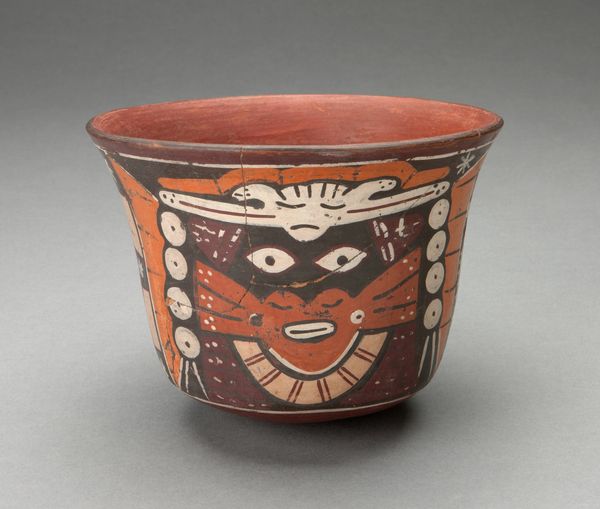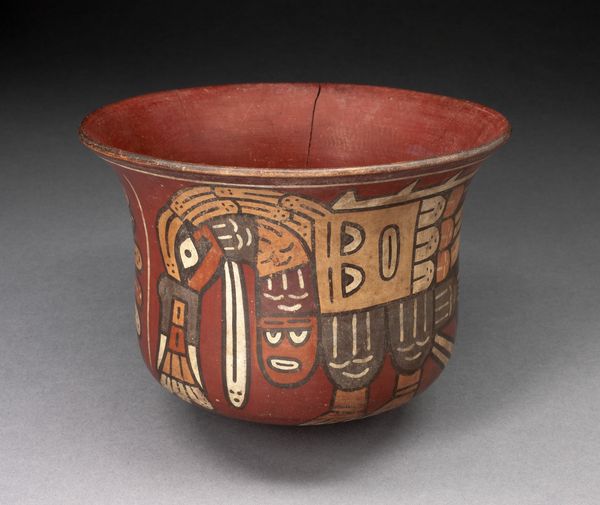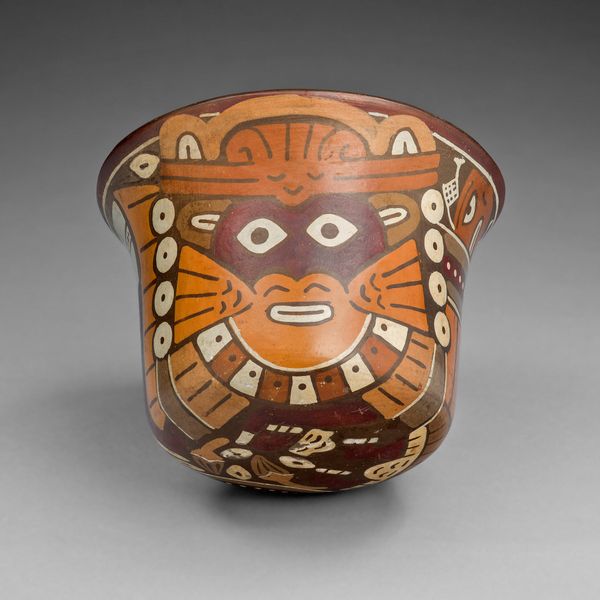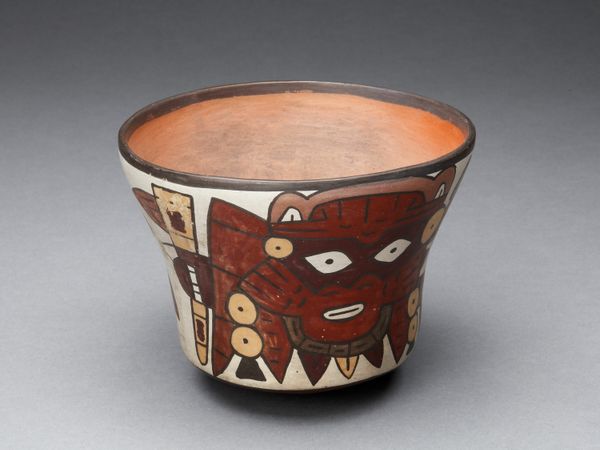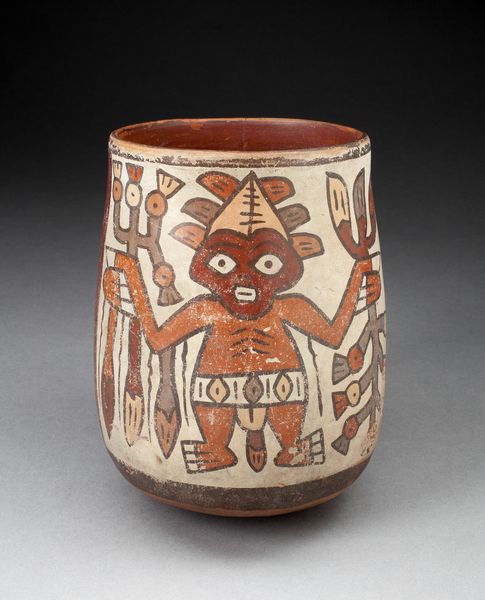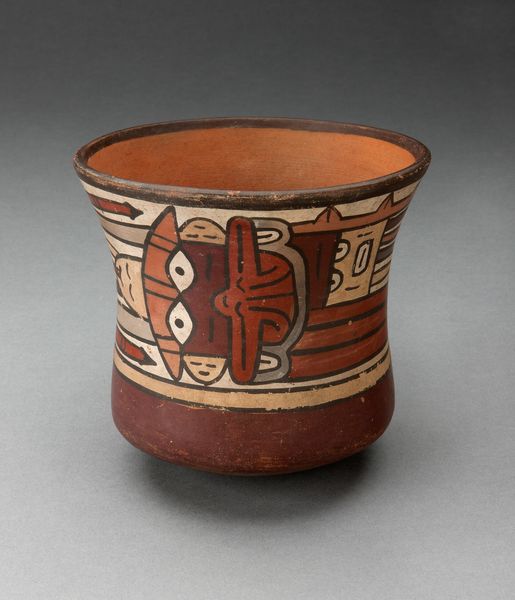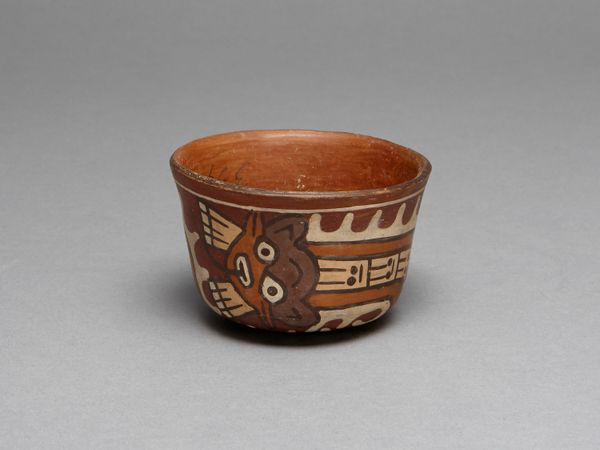
ceramic
#
pottery
#
ceramic
#
figuration
#
indigenous-americas
Dimensions: 11.4 × 14.3 cm (4 1/4 × 5 5/8 in.)
Copyright: Public Domain
Curator: This painted ceramic bowl, created by the Nazca people sometime between 180 and 500 AD, currently resides at the Art Institute of Chicago. The title given to it is "Bowl Depicting a Harvest-Festival Figure." Editor: My first impression? This isn't just a utilitarian object; the face radiating from this bowl practically vibrates with life and ritual purpose. The earth tones create a sense of groundedness. Curator: Absolutely. Pottery like this wasn't just decorative. It was deeply embedded in Nazca society, functioning as a tool in public events to negotiate relationships between people and the natural, and often supernatural, world. Harvest festivals being paramount! Editor: And what a visage! Those oversized eyes immediately grab your attention, don't they? It’s not just any face; it's deliberately crafted with significant symbolism. The spots...do they relate to crop fertility, perhaps mirroring seeds? Curator: Precisely. Given its ritual use, that symbolism would have had specific resonance for those participating. These ceramics facilitated narratives tied to social power, agricultural cycles, and perhaps even ancestor veneration. The museum’s current description sees it as celebrating a harvest deity or ritual attendant. Editor: I notice the repetition of geometric forms—triangles and curved lines—around the figure. Beyond being decorative, do they reinforce some aspect of the story, adding levels of cultural memory through consistent symbolism? Curator: Very insightful. Geometric forms tend to support rather than lead the main motif in Nasca art; the face of a significant person or deity holds central stage, commanding focus in ritual display, reinforcing cultural values of life’s bounty within that society’s specific understanding. Editor: Holding this object—even seeing it now—connects us to those ancient rituals, evoking an echo of those voices and ceremonies from the deep past. It makes you consider the enduring power of symbolic objects, doesn’t it? Curator: Exactly, that connection reminds us art’s public role in facilitating power dynamics and storytelling in societies far beyond the artwork. An example to remind the value art provides.
Comments
No comments
Be the first to comment and join the conversation on the ultimate creative platform.
